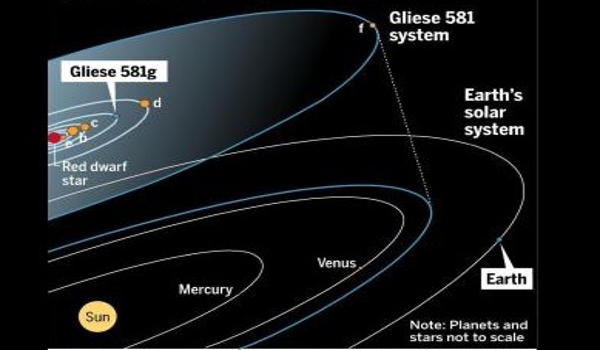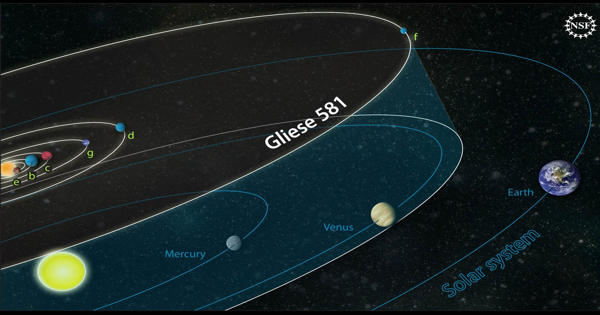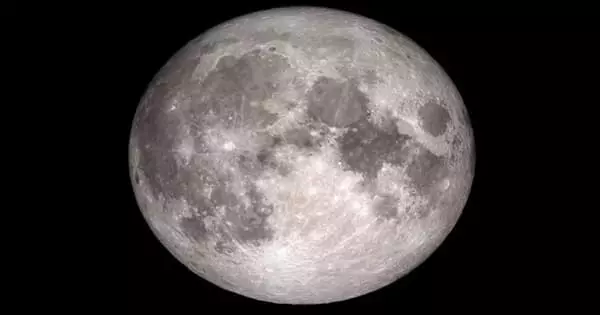Gliese 581 is an M-class red dwarf star that is not far from the Earth. It is 22 light-years away from the Solar system. It is a star of spectral type M3V (a red dwarf) at the center of the Gliese 581 planetary system, about 20 light-years away from Earth in the Libra constellation. This makes it the 89th closest known star to the Sun. It is also known as HO Librae, GL 581, or GJ 581. It is one of the oldest, least active M dwarfs, its low stellar activity bodes better than most for its planets retaining significant atmospheres and from the sterilizing impact of stellar flares.
Astronomers have discovered some planets that orbit Gliese 581. Like other red dwarfs, it’s smaller and much dimmer than our sun. Scientists believe Gliese 581 is old — at least a few billion years — and relatively stable. The astronomers agree that four of the planets are real, but some think there are two more planets.
People on Earth can see Gliese 581 in the constellation Libra. The star’s apparent magnitude is 10.57. This means that a person on Earth would need to use a telescope to see Gliese 581 because the star is not bright enough for the naked eye to see. Astronomers announced this planet’s discovery in April 2009, and it’s in the running for the lightest known extrasolar planet.

Planetary system
The Gliese 581 planetary system is the gravitationally bound system comprising the star Gliese 581 and the objects that orbit it. It has a radius, and mass, about a third that of the Sun. The system is known to consist of at least three planets discovered using the radial velocity method, along with a debris disk. Its estimated temperature is 3,498 Kelvin (4125 Celsius, 7457 Fahrenheit). The system’s notability is due primarily to early exoplanetology discoveries, between 2008 and 2010, of possible terrestrial planets orbiting within its habitable zone and the system’s relatively close proximity to the Solar System at 20 light-years away. Its luminosity is 0.01205 times the luminosity of the Sun. However, its observation history is controversial due to false detections and conjecture and with the radial velocity, method yielding little information about the planets themselves beyond their mass.
Gliese 581 is an extrasolar planetary system containing four planets. One of them, Gliese 581d, was the first planet to be found within the habitable zone of an extrasolar planetary system, the orbital region around a star in which an Earth-like planet could possess liquid water on its surface and possibly support life. The confirmed planets are believed to be located close to the star with near-circular orbits. In order of distance from the star, these are Gliese 581e, Gliese 581b, and Gliese 581c. Another, Gliese 581e, is the smallest planet seen in orbit around an ordinary main-sequence star other than the Sun. The letters represent the discovery order, with b being the first planet to be discovered around the star. Gliese 581d was discovered in 2007 and has a mass at least 5.6 times that of Earth. The planet furthest out, Gliese 581d, orbits its host star in 66.8 days, while Gliese 581 e completes its orbit in 3.15 days.
Information Source:
















